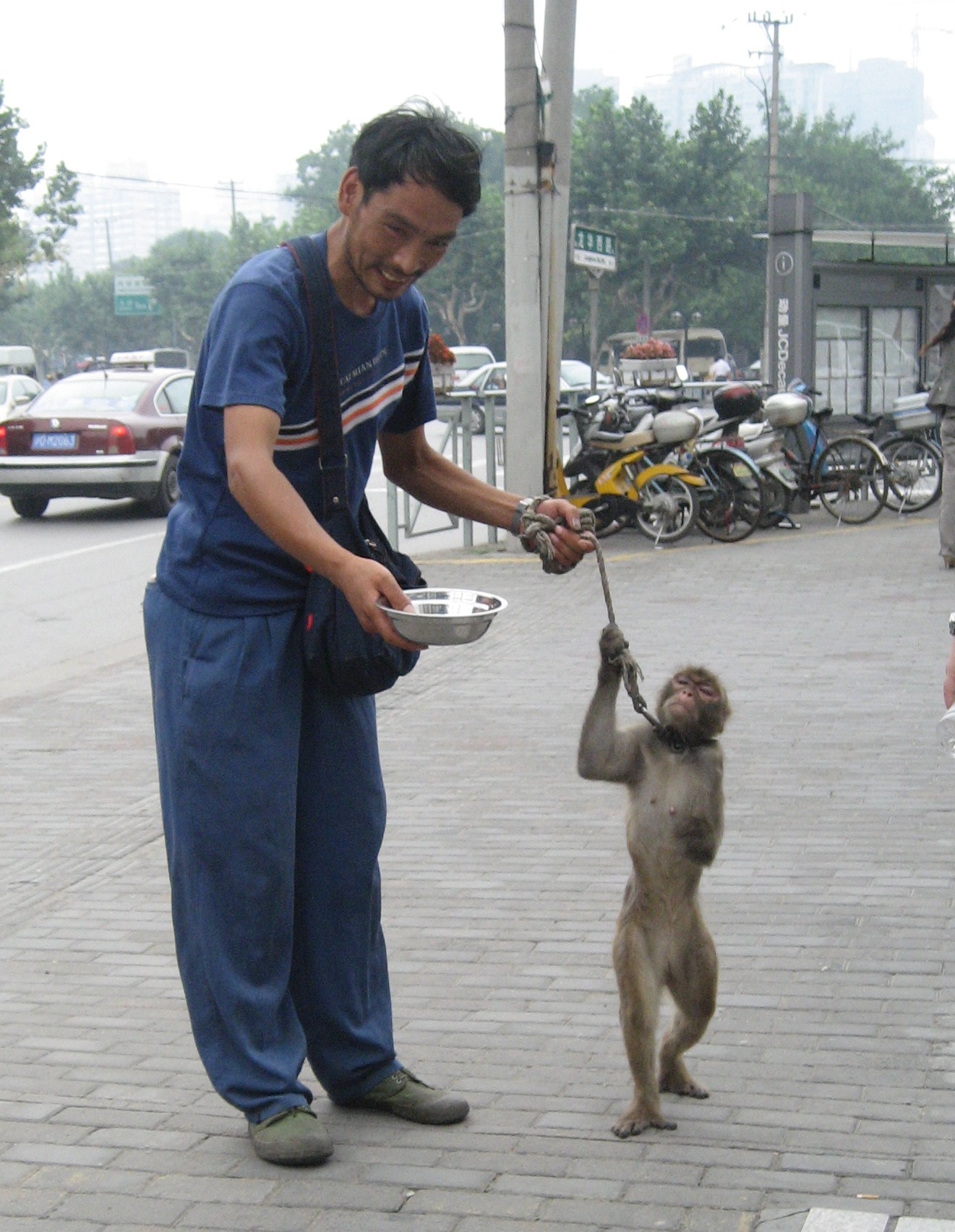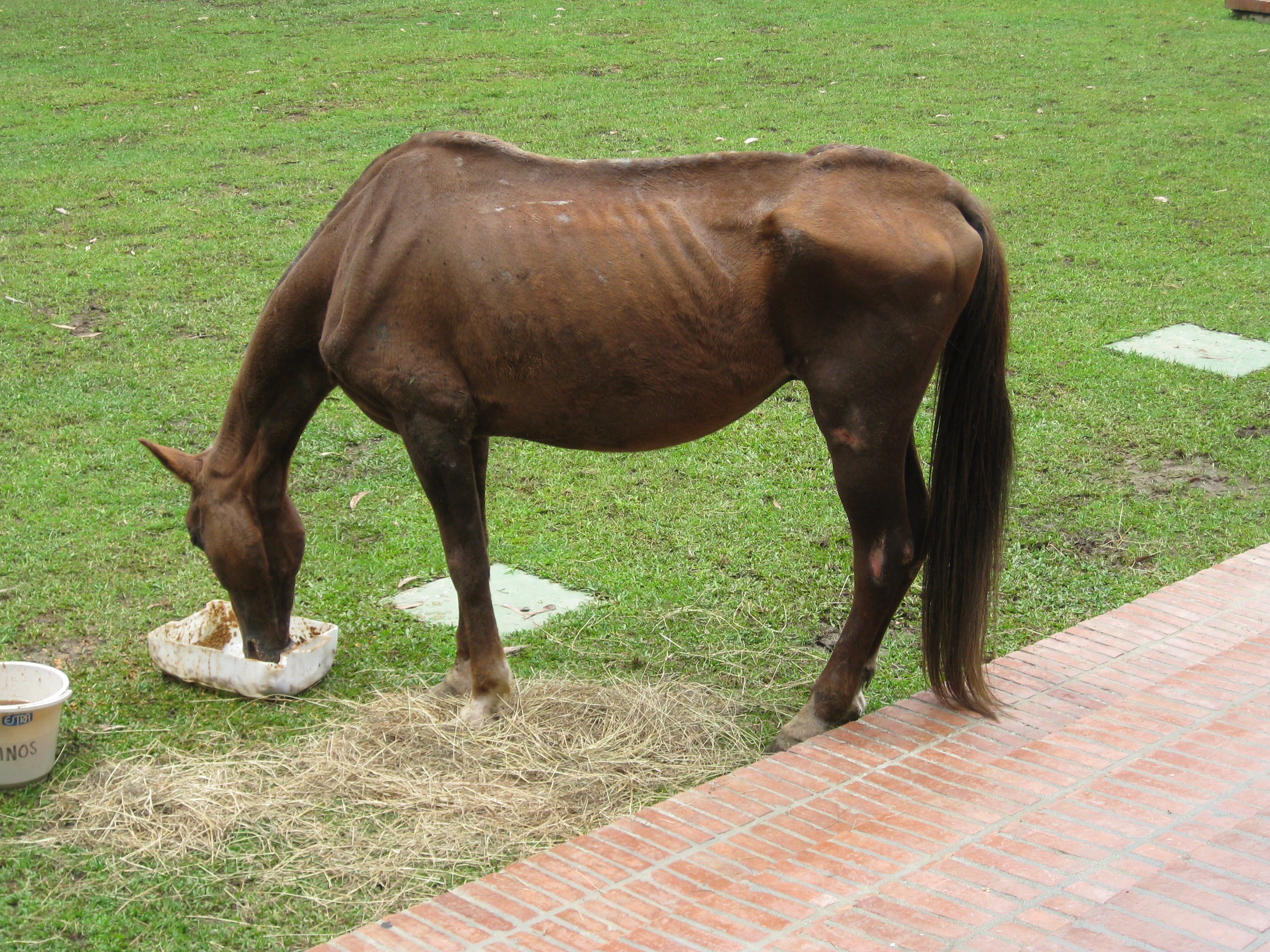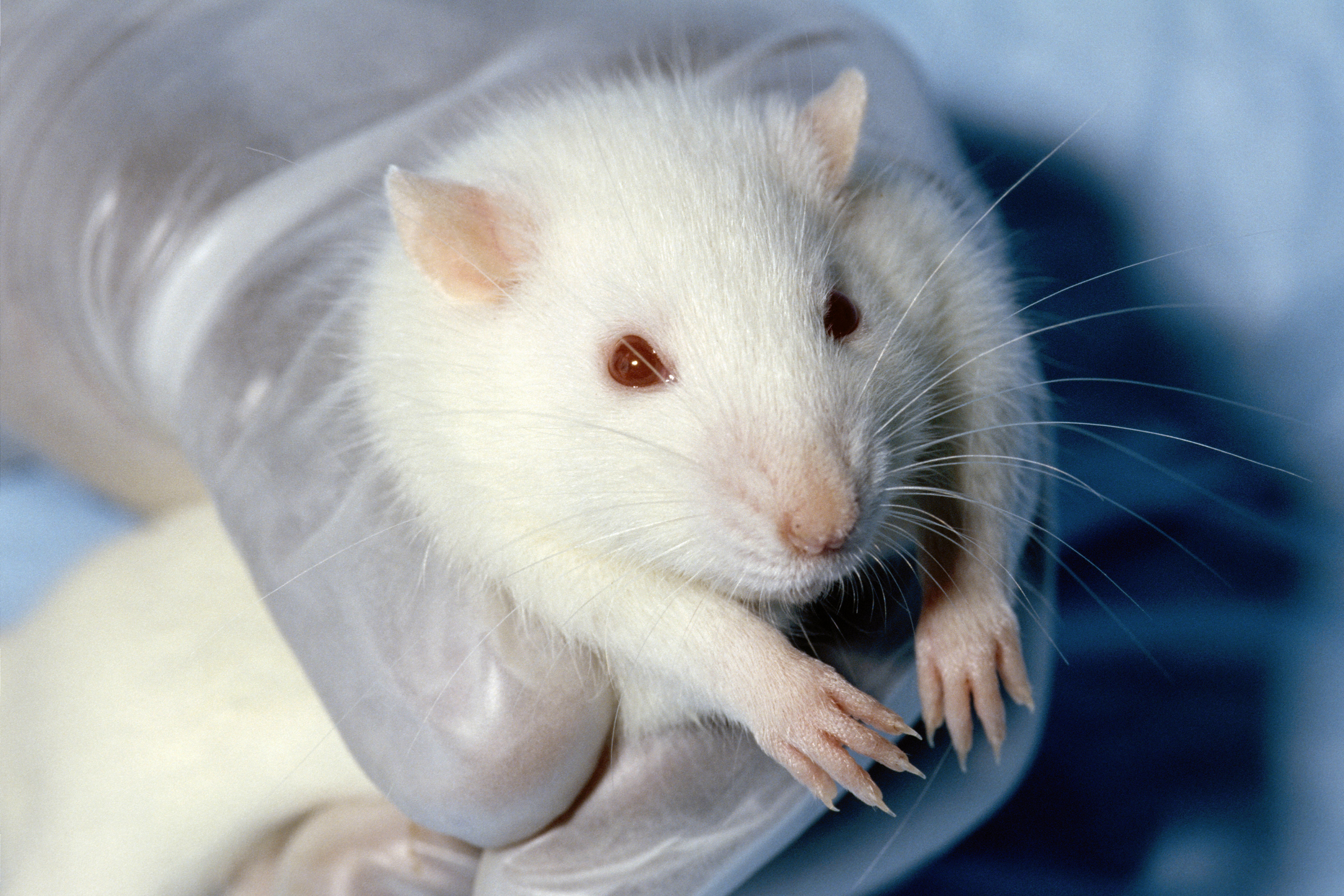|
International Primate Trade
The international trade in primates sees 32,000 wild non-human primates (NHPs) trapped and sold on the international market every year. They are sold mostly for use in animal testing, but also for food, for exhibition in zoos and circuses, and for private use as companion animals. Countries involved The United States imports around one third of all NHPs sold internationally, with the United Kingdom importing the second highest number. Japan, Russia, The Netherlands, France, and Taiwan also rank among the top importing countries. The NHPs are exported from Indonesia, Malaysia, Kenya, Thailand, Philippines, Mauritius, Amazonian regions across South America, and China, where they exist indigenously. Capture and transport They are caught by local villagers and farmers, who set traps with baited nets and or by laying bait in crates. Entire families may be caught in the nets, with any undesirable NHPs being killed and sold for food. Those who survive are taken in crates to holding ce ... [...More Info...] [...Related Items...] OR: [Wikipedia] [Google] [Baidu] |
Primate
Primates are a diverse order of mammals. They are divided into the strepsirrhines, which include the lemurs, galagos, and lorisids, and the haplorhines, which include the tarsiers and the simians (monkeys and apes, the latter including humans). Primates arose 85–55 million years ago first from small terrestrial mammals, which adapted to living in the trees of tropical forests: many primate characteristics represent adaptations to life in this challenging environment, including large brains, visual acuity, color vision, a shoulder girdle allowing a large degree of movement in the shoulder joint, and dextrous hands. Primates range in size from Madame Berthe's mouse lemur, which weighs , to the eastern gorilla, weighing over . There are 376–524 species of living primates, depending on which classification is used. New primate species continue to be discovered: over 25 species were described in the 2000s, 36 in the 2010s, and three in the 2020s. Primates have large bra ... [...More Info...] [...Related Items...] OR: [Wikipedia] [Google] [Baidu] |
Peter Gabriel
Peter Brian Gabriel (born 13 February 1950) is an English musician, singer, songwriter, record producer, and activist. He rose to fame as the original lead singer of the progressive rock band Genesis. After leaving Genesis in 1975, he launched a successful solo career with "Solsbury Hill" as his first single. His fifth studio album, '' So'' (1986), is his best-selling release and is certified triple platinum in the UK and five times platinum in the US. The album's most successful single, " Sledgehammer", won a record nine MTV Awards at the 1987 MTV Video Music Awards and, according to a report in 2011, it was MTV's most played music video of all time. Gabriel has been a champion of world music for much of his career. He co-founded the WOMAD festival in 1982. He has continued to focus on producing and promoting world music through his Real World Records label. He has also pioneered digital distribution methods for music, co-founding OD2, one of the first online music download ... [...More Info...] [...Related Items...] OR: [Wikipedia] [Google] [Baidu] |
Animal Rights
Animal rights is the philosophy according to which many or all sentient animals have moral worth that is independent of their utility for humans, and that their most basic interests—such as avoiding suffering—should be afforded the same consideration as similar interests of human beings. Broadly speaking, and particularly in popular discourse, the term "animal rights" is often used synonymously with "animal protection" or "animal liberation". More narrowly, "animal rights" refers to the idea that many animals have fundamental rights to be treated with respect as individuals—rights to life, liberty, and freedom from torture that may not be overridden by considerations of aggregate welfare. Many advocates for animal rights oppose the assignment of moral value and fundamental protections on the basis of species membership alone. This idea, known as speciesism, is considered by them to be a prejudice as irrational as any other. They maintain that animals should no long ... [...More Info...] [...Related Items...] OR: [Wikipedia] [Google] [Baidu] |
Cruelty To Animals
Cruelty to animals, also called animal abuse, animal neglect or animal cruelty, is the infliction by omission (neglect) or by commission by humans of suffering or harm upon non-human animals. More narrowly, it can be the causing of harm or suffering for specific achievements, such as killing animals for entertainment; cruelty to animals sometimes encompasses inflicting harm or suffering as an end in itself, referred to as zoosadism. Divergent approaches to laws concerning animal cruelty occur in different jurisdictions throughout the world. For example, some laws govern methods of killing animals for food, clothing, or other products, and other laws concern the keeping of animals for entertainment, education, research, or pets. There are several conceptual approaches to the issue of cruelty to animals. Even though some practices, like animal fighting, are widely acknowledged as cruel, not all people and nations have the same definition of what constitutes animal cruelty. Many ... [...More Info...] [...Related Items...] OR: [Wikipedia] [Google] [Baidu] |
Shamrock Farm
Shamrock Farm was the United Kingdom's only non-human primate importation and quarantine centre, located in Small Dole, near Henfield in West Sussex. The centre, owned by Bausch and Lomb and run by Charles River Laboratories, Inc. for Shamrock (GB) Ltd, provided animals to various laboratories and universities for use in animal testing. It was Europe's largest supplier of primates to laboratories, and held up to 350 monkeys at a time. It closed in 2000 after a 15-month protest by British animal rights activists, who campaigned under the name "Save the Shamrock Monkeys." Background The company was set up in 1954, trading in wild-caught primates until 1993 and captive-bred ones thereafter. The animals were held in windowless cabins in the company's facility, surrounded by 16 ft-high fences, razor wire, and cameras. A touch-sensitive wire ran along the base of the perimeter, with CCTV cameras zooming in on any spot that was touched. [...More Info...] [...Related Items...] OR: [Wikipedia] [Google] [Baidu] |
Nafovanny
Nafovanny in Vietnam is the largest captive-breeding primate facility in the world, supplying long-tailed macaques (''Macaca fascicularis'') to animal testing laboratories, including Huntingdon Life Sciences in the UK and Covance in Germany. Background Nafovanny was set up in 1994 by Vanny Chian Technology, a Hong Kong company, according to Reuters. Criticism of the project was expressed by Dr. John Wedderburn, a former member of the RSPCA's ruling council: "It is terrible, terrible. There is no end to the ingenuity of man when it comes to making money and being cruel." Daniel Chen, a director of Vanny Chain Technology responded "We have not got a problem with that because what we are doing is very humane and it is for the welfare of human beings."Wallis, KeithVietnam: Anger at Monkey Farm Plan ''South China Morning Post'', December 6, 2004, link courtesy of the Australian National University, accessed February 26, 2008. Location and size Nafovanny consists of two main farms in ... [...More Info...] [...Related Items...] OR: [Wikipedia] [Google] [Baidu] |
International Primate Protection League
The International Primate Protection League (IPPL) is a not-for-profit animal welfare organization founded in 1973 in Thailand by Shirley McGreal. IPPL's main focus is to promote the conservation and protection around the world of all non-human primates (NHP), including apes, monkeys, and lemurs. Coordinating an international network of 15,000 members, IPPL works to curb illegal primate trafficking, intervene in abusive practices, and encourage the efforts of sanctuaries and protection groups worldwide. The organization's main headquarters and gibbon sanctuary was established in the United States in Summerville, South Carolina, in 1977. The now-disbanded British branch, IPPL-UK, was founded in 1977 by Cyril Rosen. As of 2019 IPPL is represented in 31 countries. In countries where NHPs live, IPPL helps create and preserve national parks and sanctuaries and lobbies for bans on hunting and trapping. It raises money to fund sanctuaries, including one for gibbons obtained from re ... [...More Info...] [...Related Items...] OR: [Wikipedia] [Google] [Baidu] |
Great Ape Research Ban
This is a list of countries banning non-human ape experimentation. The term ''non-human ape'' here refers to all members of the superfamily Hominoidea, excluding ''Homo sapiens''. ''Banning'' in this case refers to the enactment of formal decrees prohibiting experimentation on non-human apes, though often with exceptions for extreme scenarios. Experimentation on great apes—a smaller family within the ape superfamily—is currently banned in the European Union, the United Kingdom, and New Zealand (29 countries total). These countries have ruled that chimpanzees, bonobos, gorillas and orangutans are so cognitively similar to humans that using them as test subjects is unethical. Austria is the only country in the world to have completely banned experiments on all apes, including both the great apes and the lesser apes, commonly known as gibbons. Table of countries banning all non-human ape experimentation Table of countries banning non-human great ape experimentation See a ... [...More Info...] [...Related Items...] OR: [Wikipedia] [Google] [Baidu] |
Great Ape Project
The Great Ape Project (GAP), founded in 1993, is an international organization of primatologists, anthropologists, ethicists, and others who advocate a United Nations Declaration of the Rights of Great Apes that would confer basic legal rights on non-human great apes: chimpanzees, gorillas and orangutans. The rights suggested are the right to life, the protection of individual liberty, and the prohibition of torture. The organization also monitors individual great ape activity in the United States through a census program. Once rights are established, GAP would demand the release of great apes from captivity; currently 3,100 are held in the U.S., including 1,280 in biomedical research facilities. ''The Great Ape Project'' (book) The 1994 book ''The Great Ape Project: Equality Beyond Humanity'', edited by philosophers Paola Cavalieri and Peter Singer, features contributions from thirty-four authors, including Jane Goodall and Richard Dawkins, who have submitted articles voicin ... [...More Info...] [...Related Items...] OR: [Wikipedia] [Google] [Baidu] |
Commodification
Within a capitalist economic system, commodification is the transformation of things such as goods, services, ideas, nature, personal information, people or animals into objects of trade or commodities.For animals"United Nations Commodity Trade Statistics Database" UN ComTrade; Josephine Donovan, "Aestheticizing Animal Cruelty," ''College Literature'', 38(4), Fall 2011 (pp. 202–217), p. 203. For slaves as commodities, Appadurai 1986, pp. 84–85; David Hawkes, ''Shakespeare and Economic Theory'', Bloomsbury Publishing, 2015, p. 130. For body commodification, Lesley A. Sharp, "The Commodification of the Body and Its Parts," ''Annual Review of Anthropology'', 29, 2000 (pp. 287–328) p. 295ff. A commodity at its most basic, according to Arjun Appadurai, is "anything intended for exchange," or any object of economic value. Commodification is often criticized on the grounds that some things ought not to be treated as commodities—for example, water, education, data, informati ... [...More Info...] [...Related Items...] OR: [Wikipedia] [Google] [Baidu] |
Animal Testing On Non-human Primates
Experiments involving non-human primates (NHPs) include toxicity testing for medical and non-medical substances; studies of infectious disease, such as HIV and hepatitis; neurological studies; behavior and cognition; reproduction; genetics; and xenotransplantation. Around 65,000 NHPs are used every year in the United States, and around 7,000 across the European Union. Most are purpose-bred, while some are caught in the wild."Animals used in research" , U.S. Department of Agriculture, p. 10 Their use is controversial. According to the , NHPs are used because their brains share structural and functional features wi ... [...More Info...] [...Related Items...] OR: [Wikipedia] [Google] [Baidu] |
Animal Testing
Animal testing, also known as animal experimentation, animal research, and ''in vivo'' testing, is the use of non-human animals in experiments that seek to control the variables that affect the behavior or biological system under study. This approach can be contrasted with field studies in which animals are observed in their natural environments or habitats. Experimental research with animals is usually conducted in universities, medical schools, pharmaceutical companies, defense establishments, and commercial facilities that provide animal-testing services to the industry. The focus of animal testing varies on a continuum from pure research, focusing on developing fundamental knowledge of an organism, to applied research, which may focus on answering some questions of great practical importance, such as finding a cure for a disease. Examples of applied research include testing disease treatments, breeding, defense research, and toxicology, including cosmetics testing. In edu ... [...More Info...] [...Related Items...] OR: [Wikipedia] [Google] [Baidu] |
.jpg)
.png)




